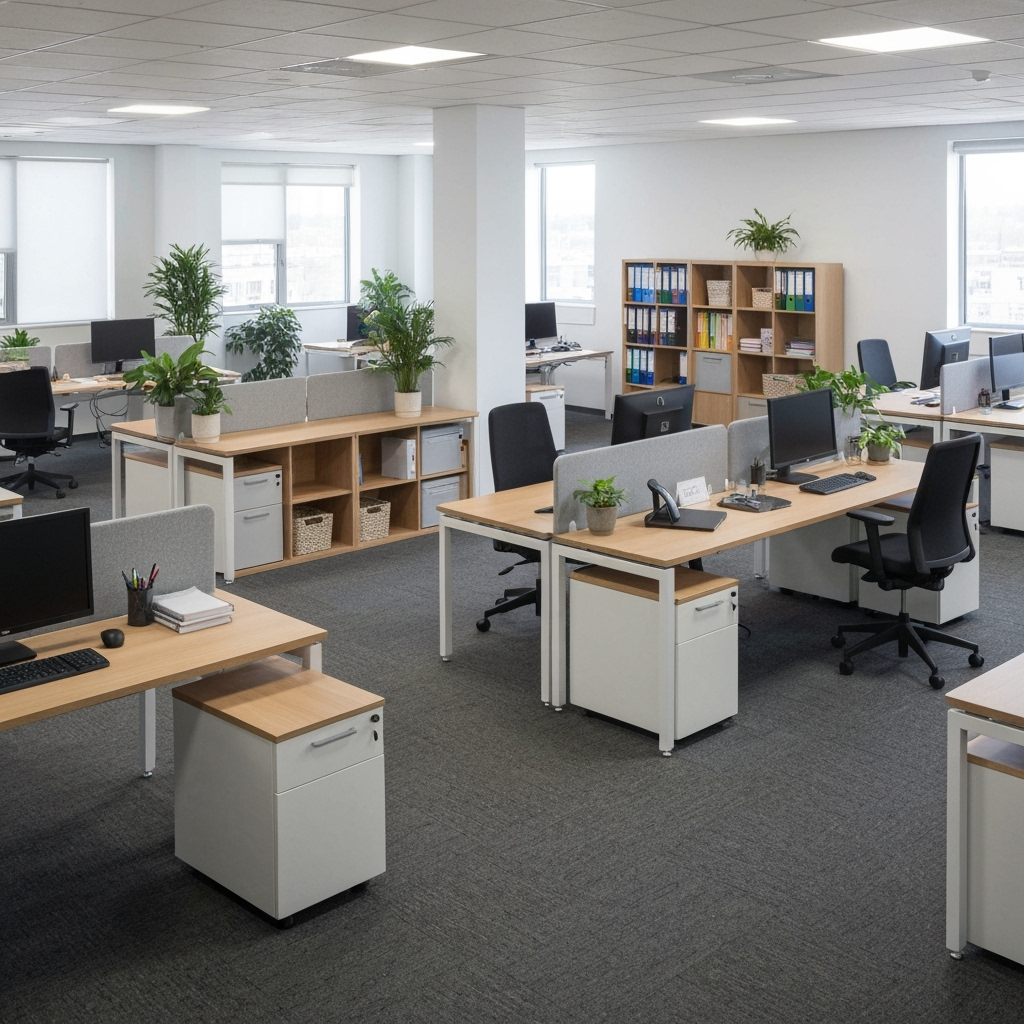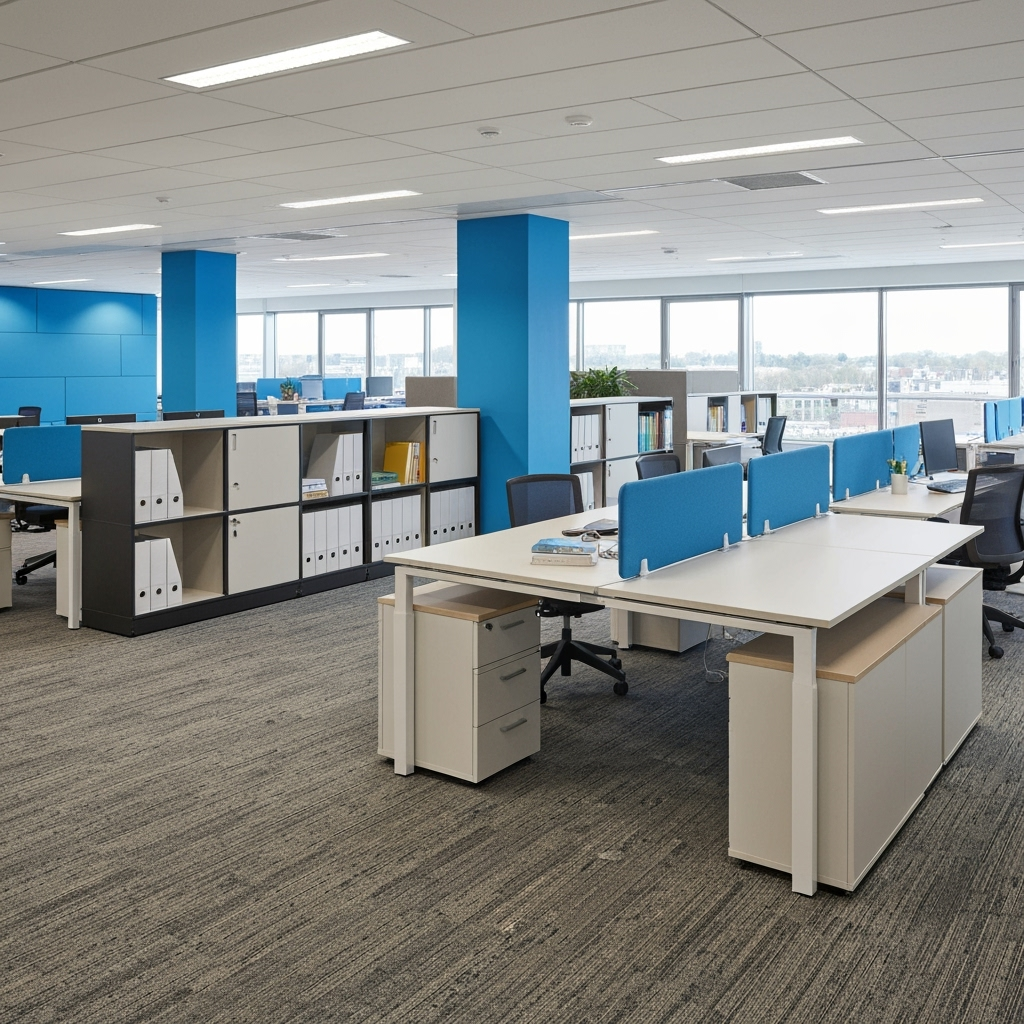The Evolution of Office Space in the Hybrid Era

As businesses adapt to the hybrid work model, office spaces are undergoing a dramatic transformation. The challenge lies in creating flexible environments that accommodate both in-office and remote work while managing excess furniture, equipment, and supplies. This guide explores how self-storage solutions can help businesses successfully navigate this transition.
Key Challenges in Hybrid Office Transitions
The shift to hybrid work presents several space-related challenges:
- Excess office furniture from reduced on-site staff
- Need for flexible spaces that can be reconfigured
- Storage of equipment for rotating team members
- Document management between physical and digital systems
- Seasonal or occasional-use items taking up valuable space
Strategic Storage Solutions for Hybrid Workspaces

1. Hot Desking Support Storage
Implement storage solutions that support hot desking arrangements:
- Mobile storage units for personal items
- Secure lockers for temporary use
- Equipment storage for shared devices
2. Furniture Management
Effectively manage excess furniture during the transition:
- Store unused desks and chairs in climate-controlled units
- Maintain furniture quality for future use or scaling
- Create an inventory system for easy access
3. Document Management Systems
Balance physical and digital document storage:
- Archive important physical documents in climate-controlled units
- Implement a checkout system for accessing stored files
- Maintain secure storage for sensitive materials
Maximizing Your Storage Investment
To get the most value from your storage solution:
- Choose climate-controlled units for electronics and sensitive items
- Implement clear labeling and inventory systems
- Create maps of stored items for easy retrieval
- Establish access protocols for team members
- Regular review and rotation of stored items
Planning Your Hybrid Office Storage Strategy
Consider these factors when developing your storage plan:
- Current and projected office occupancy rates
- Seasonal fluctuations in on-site staff
- Equipment and furniture rotation needs
- Access requirements for stored items
- Budget allocation for storage solutions
Tips for Successful Implementation
- Start with a thorough inventory assessment
- Develop clear storage organization protocols
- Train staff on new storage systems
- Regular review and adjustment of storage needs
- Maintain detailed records of stored items
Security and Access Considerations
Protect your business assets with these security measures:
- 24/7 surveillance and monitoring
- Climate control for sensitive items
- Restricted access systems
- Insurance coverage for stored items
- Regular security audits
Conclusion
The transition to a hybrid office model doesn’t have to be overwhelming. With strategic use of self-storage solutions, businesses can create flexible, efficient workspaces while maintaining access to necessary furniture, equipment, and materials. Start planning your hybrid office transformation today with Public Storage’s business storage solutions.










Leave a Reply